Search results for: 'bronzezeit'
-
 Großes Skarabäussiegel aus der Zeit des Amenophis III.
Großes Skarabäussiegel aus der Zeit des Amenophis III.14. Jh. v. Chr. Heute noch erhaltene Überreste der Bautätigkeit Amenophis III. sind die Memnonkolosse, sowie der Hauptteil des Luxor-Tempels.
Price: on request Skarabäussiegel mit abstaktem Stempelmotiv
Skarabäussiegel mit abstaktem StempelmotivDie Stempelfläche trägt ein dekoratives Muster mit ästhetischer oder magischer Funktion. Sehr schöner und anschaulicher Skarabäus, in etwa aus der Zweiten Zwischenzeit des Alten Ägyptens. 2000 bis 1300 v. Chr.
Price: on request Ägyptisches Skarabäusamulett aus der 18. Dynastie
Ägyptisches Skarabäusamulett aus der 18. DynastieÄgyptisches Stempelsiegel-Amulett in der stilisierten Form eines Skarabäuskäfers. Die Stempelfläche trägt Hieroglyphen. Das Amulett datiert in die 18. Dynastie des Alten Ägyptens.
Price: on request Skarabäusamulett aus der Hyksoszeit
Skarabäusamulett aus der HyksoszeitÄgyptisches Skarabäusamulett mit typischen Symbolen für die Herrschaftszeit der Hyksos. Aus der Zeit der Fremdherrschaft, ca. 1650 bis 1550 v. Chr.
Price: on request Skaraboides Stempelsiegel
Skaraboides StempelsiegelÄgyptisches Stempelsiegel-Amulett in der stark stilisierten Form eines Skarabäuskäfers. Die Stempelfläche trägt eine symbolische Verzierung. 1. Jt. v. Chr.
Price: on request Ägyptisches Skarabäusamulett
Ägyptisches SkarabäusamulettSkarabäussiegel aus dem 2. Jt. v. Chr. mit ansprechender türkisfarbener Fayenceoberfläche. Die Stempelfläche trägt eine hieroglyphische Inschrift.
Price: on request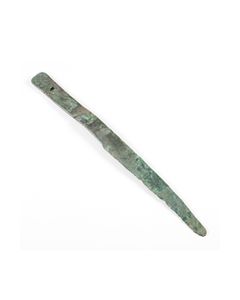 Baktrisches Messer aus Bronze
Baktrisches Messer aus BronzeLanges, schmales Messer. Massiv, sehr gut erhalten, Klinge noch immer scharf. Im Griff Bohrung. ca. 2000 - 500 v. Chr.
Price: on request Tafel mit assyrischem Gesetzestext in Keilschrift aus alter deutscher Sammlung
Tafel mit assyrischem Gesetzestext in Keilschrift aus alter deutscher SammlungFragment einer Tontafel mit altassyrischem Verwaltungs- oder Gesetzestext. Mitte bis Ende des 2. Jt. v. Chr.
Price: on request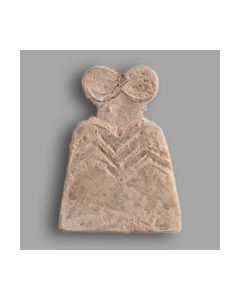 Syrisches Augenidol vom Tell Brak-Typ
Syrisches Augenidol vom Tell Brak-TypHervorragender Zustand mit schön erhaltener Oberfläche. Begutachtet durch Prof. Lambert, mit Notiz aus seiner Hand. Fund aus Tell Brak in den 1920er Jahren.
Price: on request Ägyptischer Skarabäus mit Knotenmuster
Ägyptischer Skarabäus mit Knotenmuster12. bis 18. Dynastie des Alten Ägypten, ca. 2000 v. Chr. bis 1300 v. Chr. Die Stempelfläche trägt ein Knotenmuster mit ästhetischer oder mutmaßlich magischer Funktion.
Price: on request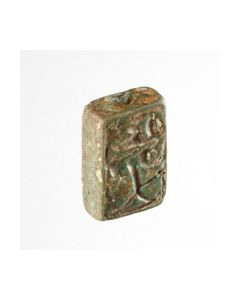 Ägyptisches Plättchen mit Kartusche des Sethos I.
Ägyptisches Plättchen mit Kartusche des Sethos I.Doppelseitige Platte aus grüner Fayence aus dem Neuen Reich, ramessidisch, um 1290 v. Chr. Sphinx und Kartusche (Men-Maat-Re) und Namens-Kartusche mit dem Eigennamen Meri-en-Ptah.
Price: on request Skarabäus mit Kartusche des Chaneferre
Skarabäus mit Kartusche des ChaneferreSkarabäus mit Namens-Kartusche des Königs Chaneferre (Sobekhotep IV.). 13. Dynastie des Alten Ägyptens, ca. 1700-1680 v. Chr.
Price: on request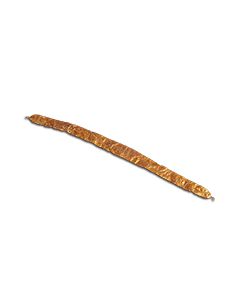 Mycenaean gold diadem
Mycenaean gold diademDelicate piece of ancient jewelry made of gold foil
Price: on request Scarab with sphinx
Scarab with sphinxThe stamp depicts a sphinx with pharaoh headcloth walking towards the Ankh symbol of life. The amulet should exert a protective function on the one carrying or owning it.
Price: on request Egyptian scarab with papyrus plants
Egyptian scarab with papyrus plantsScarab amulet made of bright, almost white steatite. 13th to 15th dynasty. This scarab is described in the catalogue of Irène Gautier-Vodoz.
Price: on request Egyptian faience ring showing Bes and Taweret
Egyptian faience ring showing Bes and TaweretThe finger ring with its scene on the plate must have served a protective function for an expectant mother. New Kingdom, approx. 1550 to 1070 BC.
Price: on request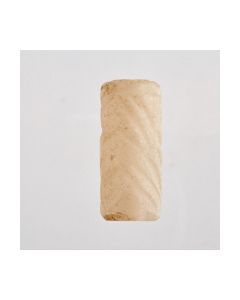 Mesopotamian cylinder seal with abstract scene
Mesopotamian cylinder seal with abstract sceneThe milky white stone is engraved with a scene that stands out by its high degree of abstraction. Late Uruk to Djemdet Nasr period, around 3000 BC.
Price: on request Mesopotamian cylinder seal with fighting scene
Mesopotamian cylinder seal with fighting sceneThe scene shows a fight between hero and lion with animals. Early Dynastic Period III, around 2500 BC.
Price: on request Akkadian cylinder seal of shell core
Akkadian cylinder seal of shell coreTwo lions are fighting with two buffalos. The balance and detail of the scene is an impressive demonstration of the Akkadian seal engraver's skill. Old Akkadian, around 2300 BC.
Price: on request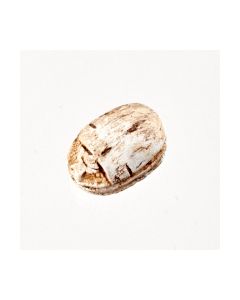 Scarab with lotus motive
Scarab with lotus motiveAncient Egyptian amulet seal with beautiful motive. Six lotus flowers are forming volutes. This scarab is described in the catalogue of Irène Gautier-Vodoz.
Price: on request Scarab with scarab motive
Scarab with scarab motiveThe stamp side shows a scarab with two uraeus snakes. This scarab is described in the catalogue of Irène Gautier-Vodoz.
Price: on request Cuneiform tablet from Umma
Cuneiform tablet from UmmaRecord of beer and bread rations for laborers. Probably from the Bronze Age city of Umma. The cuneiform tablet was studied and conserved at Yale University.
Price: on request Clay tablet with cuneiform script
Clay tablet with cuneiform scriptSmall tablet with well preserved cuneiform engravings. Interesting Bronze Age document from Mesopotamia.
Price: on request Sumerian cuneiform clay tablet
Sumerian cuneiform clay tabletSmall tablet with drill hole. Cuneiform receipt for bricks or pottery. Very well preserved piece from the late 3rd millenium BC.
Price: on request Egyptian fingerring from the Amarna period
Egyptian fingerring from the Amarna periodMade of colourful turquoise fayence. Two fully modelled crocodiles adorn the plate. Perfect preservation including original black paint.
Price: on request Ramesside Scarab
Ramesside ScarabEgyptian scarab from the 19th to 20th dynasty. With horse and hieroglyphs.
Price: on request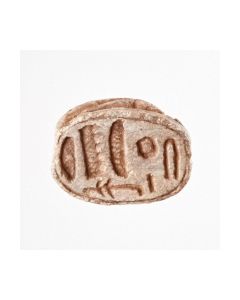 Scarab with inscription
Scarab with inscriptionThe lower side bears a hieroglyph inscription. Nice piece from the Freemark collection. New Kingdom.
Price: on request Scarab with cross symbol
Scarab with cross symbolA piece from the Ramesside Period to the early Third Intermediate Period of ancient Egypt. Great early 20th century provenance.
Price: on request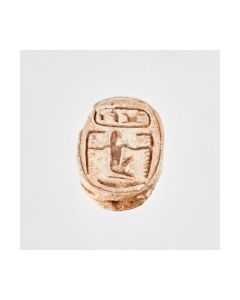 Scarab with god Heh and cartouche
Scarab with god Heh and cartoucheInteresting motive showing the kneeling god of endlessness with palm stem in both hands. Above him the cartouche of pharao Mencheperre. Around the 18th dynasty of ancient Egypt.
Price: on request Scarab with sphinx and Maat
Scarab with sphinx and MaatThe piece from the Ramesside period shows the goddess of truth and justice. Next to her is a name, probably that of pharao Mencheperre, who is famous as Thutmosis III.
Price: on request Scarab of pharao Seti I.
Scarab of pharao Seti I.The Egyptian scarab bears a hieroglyphic inscription which can be read as the name of pharao Seti I. From the Ramesside period, around 1300 BC.
Price: on request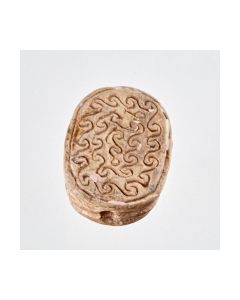 Scarab with spiral design and symbol for good luck
Scarab with spiral design and symbol for good luckThe Egyptian scarab from the Second Intermediate Period is decorated with a geometrical pattern. A nefer hieroglyph stands for good luck.
Price: on request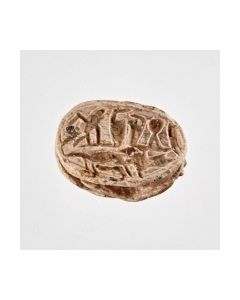 Scarab from the Ramesside period
Scarab from the Ramesside periodThe bottom side shows Horus, Uraeus and crocodile. The crocodile could be interpreted a the god Sobek.
Price: on request Babylonian carnelian cylinder seal
Babylonian carnelian cylinder sealPrime example made of beautiful orange carnelian. Highly detailed engraved scene with king offering to the weather god Hadad. First half of 2nd Millenium BC.
Price: on request Early Elamite cylinder seal from a museum collection
Early Elamite cylinder seal from a museum collectionCompact seal with geometric design from Elam. 3rd Millenium BC.
Price: on request Egyptian Scarab
Egyptian ScarabThe scarab amulet is made of steatite. It has a hieroglyphic inscription on the lower side, including a reference to Amun-Re.
Price: on request

